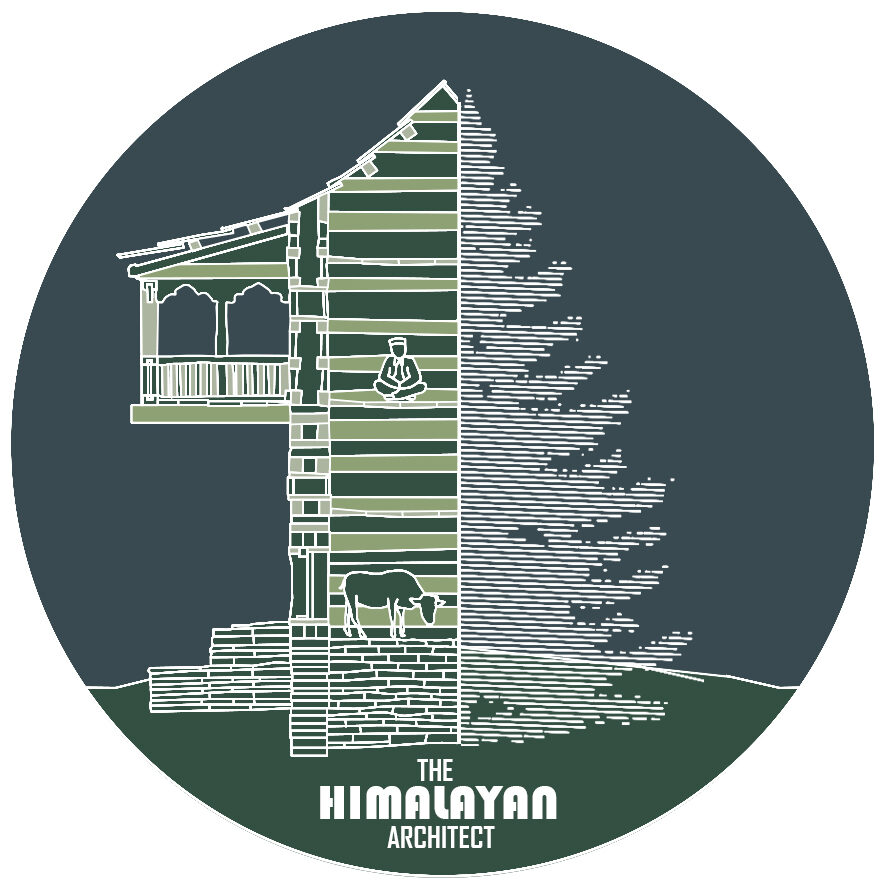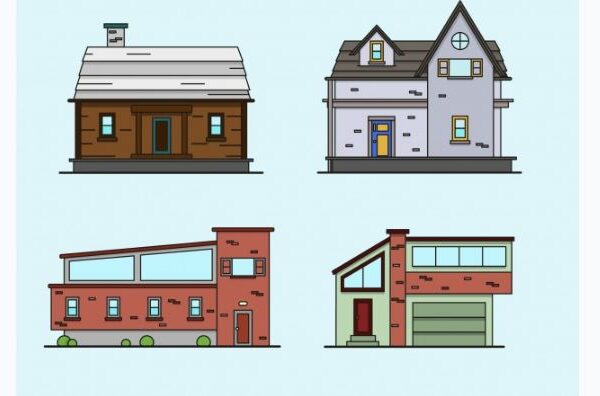Green buildings:
Green building is a very important part of Sustainable architecture. These buildings are environment friendly and sustain for longer period of time in comparison to the conventional buildings. The cost of these buildings may be high at the first place but in long run they are much cheaper.But for designing any green building an architect should be aware of its scientific aspects. In this post, GRIHA-Green building rating system in India will be discussed.
What is green rating system?
Types of green rating system in India:
1. GRIHA (Green Rating for Integrated Habitat Assessment)
2. IGBC (Indian Green Building Council)
3. LEED India (Leadership in Energy and Environment Design

GRIHA-Green building rating system in India:
GRIHA (Green rating for Integrated Habitat Assessment)
GRIHA is the word derived from Sanskrit language which means “Adobe”. TERI (Tata Energy Research Institute) has developed GRIHA, which was adopted by government of India as a National green building rating system in 2007 after rapid increase in population and infrastructure in India.
Basic features of GRIHA: This system has been developed to “design and evaluate” the building as well as existing building. So, the building is assessed in various stages.
- Pre-construction stage: Starts from site selection, surroundings, flora and fauna, soil and land of site and its site features.
- Building planning and construction stage: Reduction in usage of energy and resources, recovery and reuse, occupants health and well being.
- Operation and maintenance stage: Operation check on regular intervals and maintenance of human well being and monitoring of energy consumption regularly.
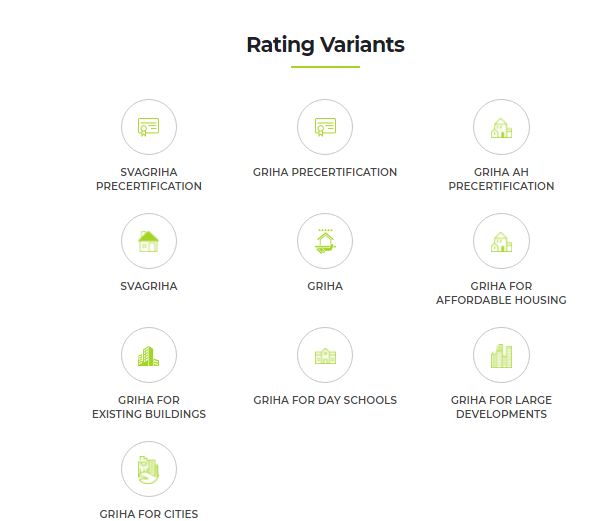
GRIHA rating variants (Source: https://www.grihaindia.org/)
The GRIHA rating varies according to the type of project as shown in the image above.
GRIHA rating system: (V2019)
Eligibility: All new construction project which is having area more than 2500m2 (excluding parking, basement and typical buildings) are eligible for certification under GRIHA V2019.
Rating process: Following image shows the rating process under GRIHA, it consists of various steps under which project has to follow the process sequence accordingly.
1. Online registration: The project team has to fill up an online form for the registration of the project. After successful payment the project gets registered. Then GRIHA will provide online username and password for the project.
2. Orientation Workshop: After registration the workshop is conducted by GRIHA council officials. In which they provide the complete information about the rating process and elaborate all the criteria in detail. Followed by the discussions on the project related queries.
3. Due Diligence I: The site visit will be conducted by GRIHA officials which to ensure the sustainable measures taken during the construction phase. It will be scheduled post the project has reached the plinth level.
4. Due Diligence II: The second site visit will be conducted by GRIHA officials to validate the internal finishes, electrical, plumbing and mechanical works installed during the construction phase. It will be scheduled after the building structure is complete.
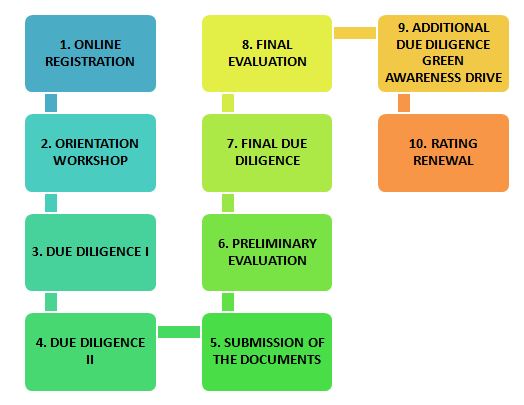
5. Submission of the documents: Nearly about the project completion, the proponent will be uploading documents of all criteria on online panel using username and password provided during registration.
6. Preliminary Evaluation: Evaluation of the submitted documents by the GRIHA officials and external evaluators, who are experts organised by GRIHA council.
7. Final Due Diligence: Final site visit by GRIHA officials to verify the documentation with the site implementation. Visit is planned when the project is complete and with all the systems and equipment are installed.
8. Final Evaluation: The GRIHA council along with external evaluators shall evaluates the final round of final documents and also final site visit inn response to the preliminary evaluation. The rating will be awarded based on final evaluation that will be valid upto 5 years.
9. Additional Due diligence green awareness drive: Additional due diligence conducted by GRIHA council after the final rating for educating and aware occupants about green building and its working.
10. Rating renewal: There are two ways in which building can be renewed. First by subitting the audit data report (over the span of 3 consecutive year) comprising energy, water and waste or second by enrolling to GRIHA EB (existing building) to maintain its certification for the cycle of next 5 years.
GRIHA V2019 Criterion: Following table shows the criterion under different sections related to planning, construction and monitoring of the building. Also points has been awarded to criterion based on their importance.
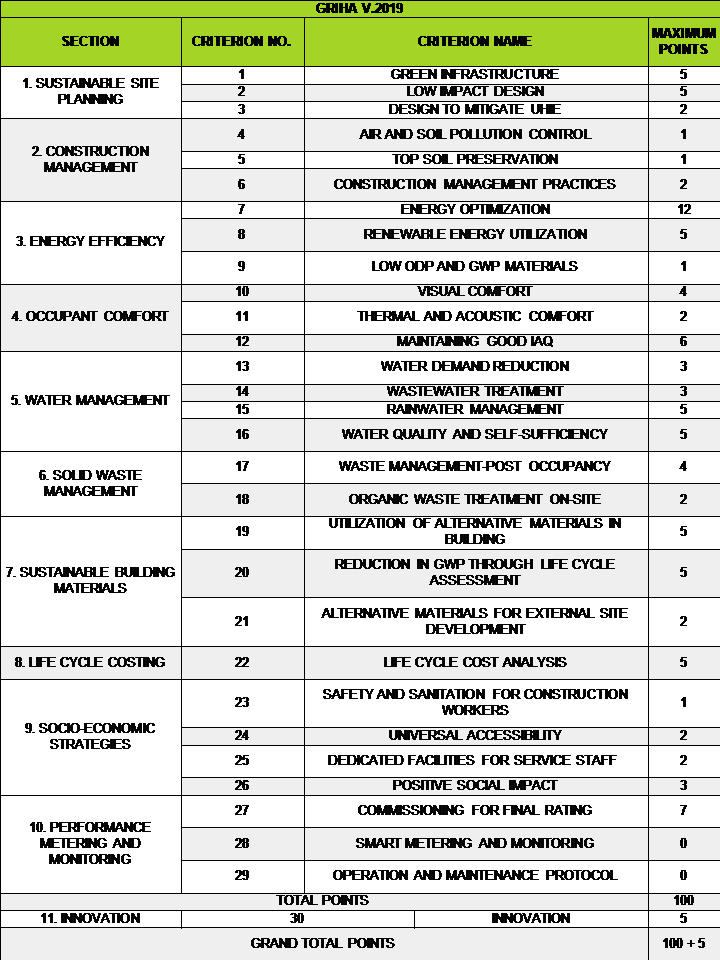
(Source: https://www.grihaindia.org/griha-rating)
Rating Threshold: GRIHA award the star rating to the projects after completion of the project. According to the criterion achieved the total points calculated. The table given below shows the rating threshold and rating given to the project.
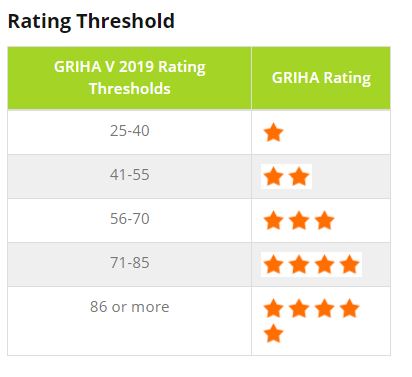
(Source: https://www.grihaindia.org/griha-rating)
GRIHA fees: Following table shows the fees of the project as per the built up area of the project registered under GRIHA V2019.

(Source: https://www.grihaindia.org/griha-rating)
So, that is all about the GRIHA-Green building rating system in India. So, project should register for rating with GRIHA because it provides incentive based on the star rating achieved by the project. The incentives starts from 3% to 10% additional FAR and much more which has been granted 4 or 5 star rating. It varies from region to region. For more details on FAR incentives please visit https://www.grihaindia.org/griha-incentive. If you liked reading this blog please comment, share, like and contact us in case of any query. Also, to know more about architecture please read my previous blogs under architecture category. Thank you.
